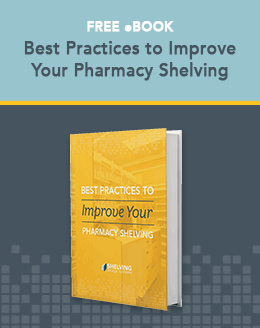 Creating a pharmacy workplace that promotes an efficient pharmacy workflow benefits everyone. For example:
Creating a pharmacy workplace that promotes an efficient pharmacy workflow benefits everyone. For example:
- Customers are happier because prescription orders come out more quickly
- Technicians are more comfortable and able to do a better job, which improves their attitudes
- Pharmacists have more time to interact with patients and to spend time providing clinical services, such as taking blood pressure readings, administering inoculations and consulting with clients regarding their health conditions, medications, dosage requirements and potential drug interactions
All drugstore back-end operations have their own unique pharmacy workflow, whether it's been formally created or evolved as “the way we've always done things.” When starting a new pharmacy, it pays to place special emphasis on streamlining the back-end pharmacy workflow in order to provide the best service possible to your patients. According to the National Community Pharmacists Association (NCPA) Digest, 90% or more of the revenue brought in by most independent pharmacies comes from selling prescription medications. While the back-end of your store may take up much less area than the front-end, it's important that this area run as efficiently as possible since it's responsible for such a big chunk of the store's bottom line.
In an existing pharmacy where you're looking to improve productivity, take a close look at the way things are being done now and consider making a concerted effort to increase efficiency by incorporating some of the following tips. These should help promote the three benefits outlined above.
Typical Workflow
Designing the most beneficial workspaces takes first priority in creating an efficient pharmacy workflow. While the workflow process and workstations required will depend on the number of staff members working in the prescription area and the average number of scripts routinely filled, workflow basics remain the same. Each step along the way to filling an order should be distinct and include the six following basic steps:
- Drop off
- Input
- Filling
- Verification
- Pick up
- Consultation
Who Does What and Where?
In an ideal situation, where staff numbers allow and fill volumes justify it, each of the six steps in the above-outlined workflow could have a single, dedicated person fulfilling that step's requirements. Often, however, one individual will need to perform multiple steps. The pharmacist, for example, may perform the verification, the pick-up and the consultation. In some pharmacies, the druggist will also stand behind the drop-off counter and perform this function. This gives him/her the opportunity to get more face-to-face time with patients.
Each workspace should be large enough to accommodate the needs of the person manning that station, and all supplies needed should be within easy reach. This cuts down on excess walking, bending and reaching. The drop-off counter should be large enough to handle a computer and telephone with enough extra space for the customer to place their bags or parcels there and for the staff member and client to be able to write without being crowded.
Inputting typically takes place at the drop-off counter, which means this workspace may need to accommodate two staff members (with two computers) and two telephones plus leave enough extra space for the customer to use for signing forms, accessing their insurance documents, etc.
The individual doing the actual filling needs to have commonly used medicines and supplies within easy reach, like an airplane pilot in the cockpit. Necessary space also needs to be allowed for automated dispensing equipment, such as pill counters or carousel units.
Give your staff room to do their jobs comfortably, and they'll perform better. They'll be happy, you'll be happy and your clients will be delighted with your fine service.




